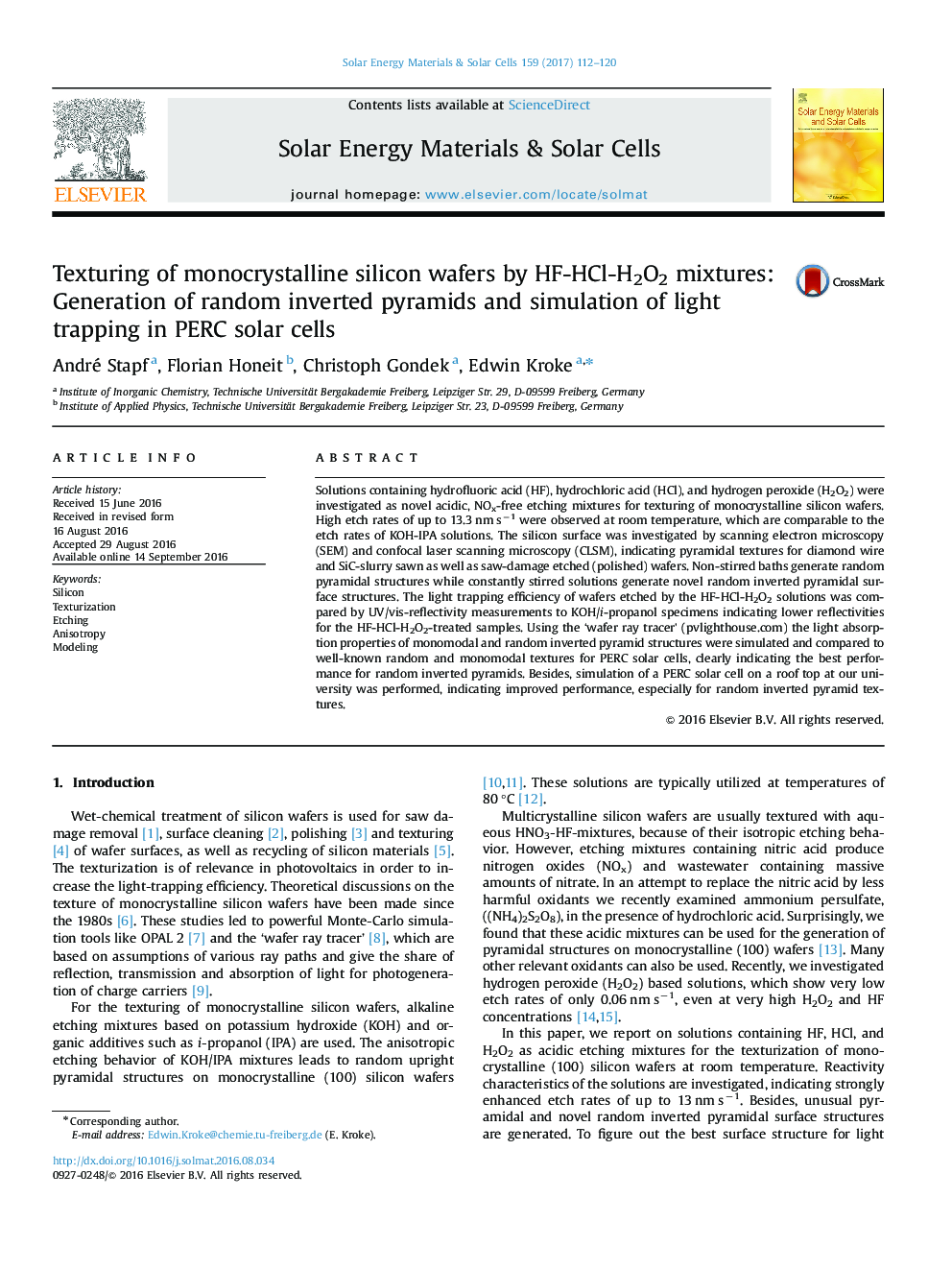| کد مقاله | کد نشریه | سال انتشار | مقاله انگلیسی | نسخه تمام متن |
|---|---|---|---|---|
| 6457457 | 1420664 | 2017 | 9 صفحه PDF | دانلود رایگان |

- Anisotropic etching and formation of pyramidal textures by ACIDIC etching mixtures.
- Unusual formation of random inverted pyramids by stirring of the etching mixture.
- High etch rates up to 13.3 nm sâ1 at 20 °C (comparable to KOH-IPA at 75 °C).
- Lower reflectivities than KOH-IPA treated wafers at relevant etch depths.
- Better performance is shown by simulations of PERC solar cells.
- Potential for less cleaning efforts due to the high solubility of metals in HCl.
Solutions containing hydrofluoric acid (HF), hydrochloric acid (HCl), and hydrogen peroxide (H2O2) were investigated as novel acidic, NOx-free etching mixtures for texturing of monocrystalline silicon wafers. High etch rates of up to 13.3 nm sâ1 were observed at room temperature, which are comparable to the etch rates of KOH-IPA solutions. The silicon surface was investigated by scanning electron microscopy (SEM) and confocal laser scanning microscopy (CLSM), indicating pyramidal textures for diamond wire and SiC-slurry sawn as well as saw-damage etched (polished) wafers. Non-stirred baths generate random pyramidal structures while constantly stirred solutions generate novel random inverted pyramidal surface structures. The light trapping efficiency of wafers etched by the HF-HCl-H2O2 solutions was compared by UV/vis-reflectivity measurements to KOH/i-propanol specimens indicating lower reflectivities for the HF-HCl-H2O2-treated samples. Using the 'wafer ray tracer' (pvlighthouse.com) the light absorption properties of monomodal and random inverted pyramid structures were simulated and compared to well-known random and monomodal textures for PERC solar cells, clearly indicating the best performance for random inverted pyramids. Besides, simulation of a PERC solar cell on a roof top at our university was performed, indicating improved performance, especially for random inverted pyramid textures.
199
Journal: Solar Energy Materials and Solar Cells - Volume 159, January 2017, Pages 112-120